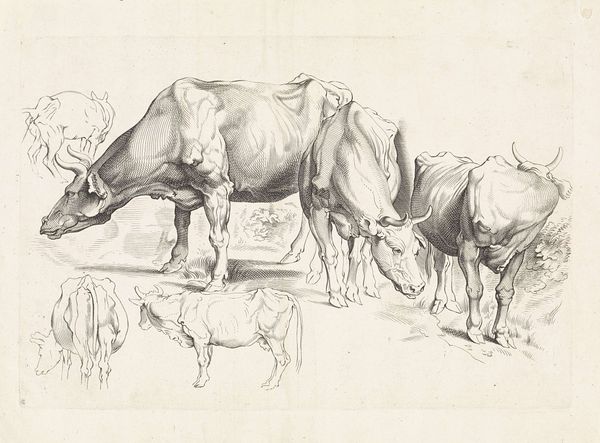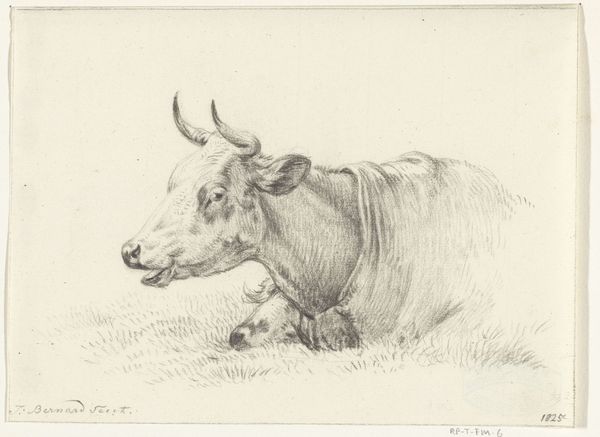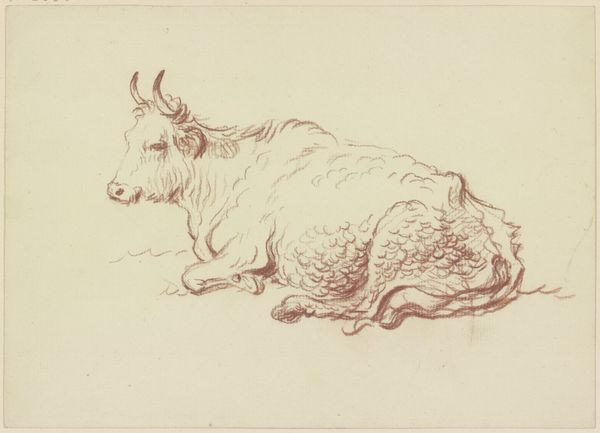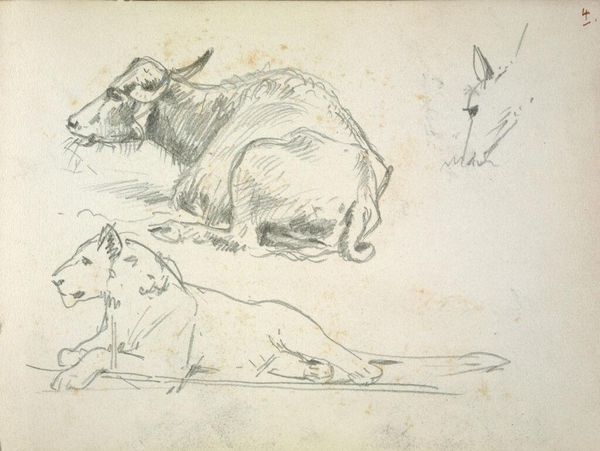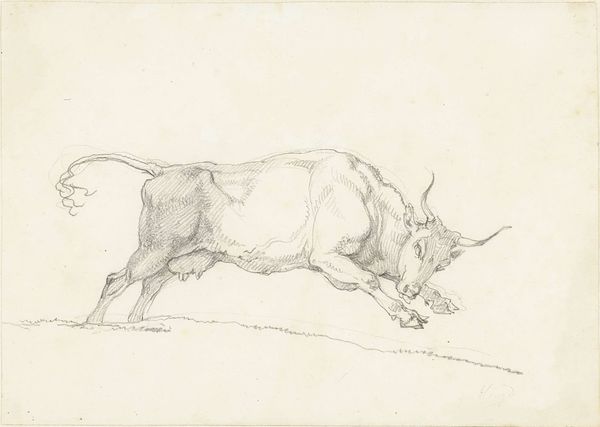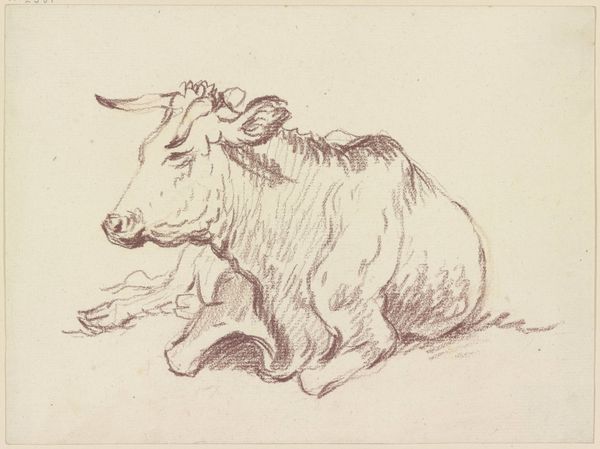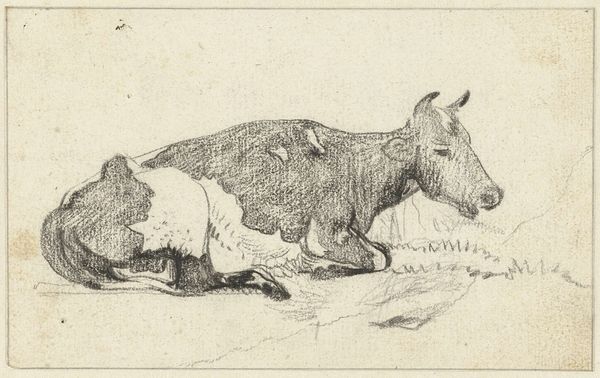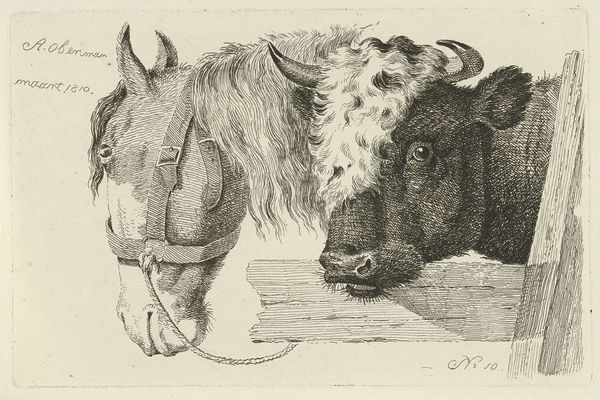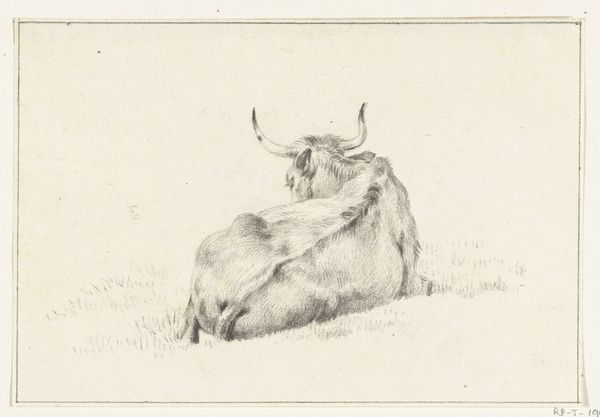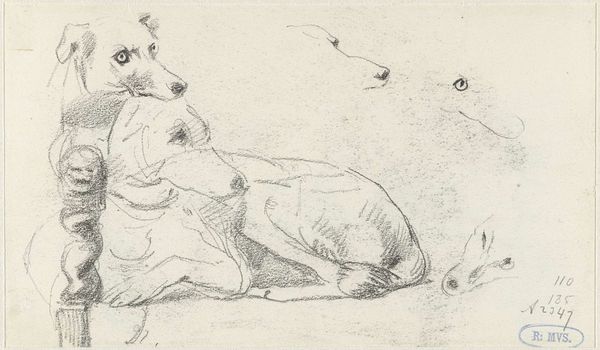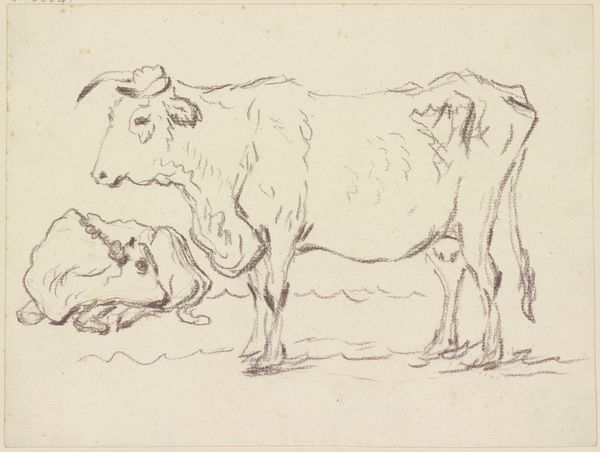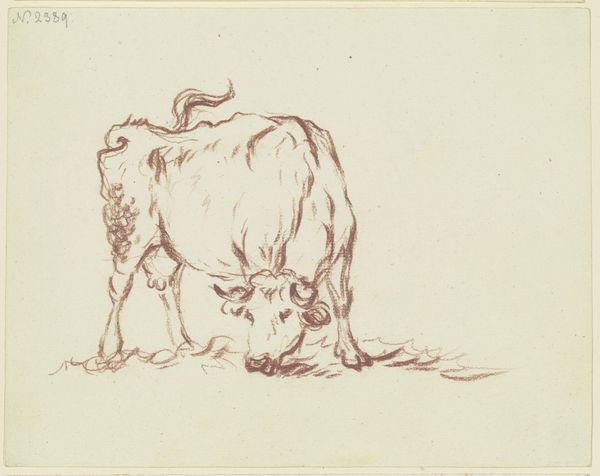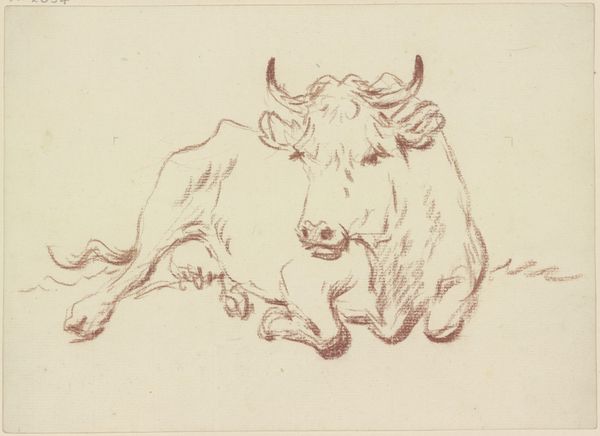
drawing, pencil, graphite
#
pencil drawn
#
drawing
#
pencil sketch
#
landscape
#
figuration
#
pencil drawing
#
pencil
#
line
#
graphite
#
realism
Copyright: Public Domain: Artvee
Curator: Here we have Wilhelm Kuhnert's "Cape Buffalo," a pencil and graphite drawing completed in 1916. It's a fascinating study in animal portraiture, reflecting the artistic trends of the early 20th century that embraced both realism and a deep appreciation for the natural world. Editor: Oh, it's magnificent. There's a quiet intensity in its gaze that just grabs you. And the soft shading of the pencil gives a lovely velvety texture to the buffalo's coat. It's somehow both imposing and gentle. Curator: Absolutely. Kuhnert, renowned for his animal studies, really captures the Cape Buffalo’s physical presence. It’s less a sentimental representation, and more an attempt to document a specific animal form. One that fed into a fascination with African wildlife prevalent at that time. Editor: Document, sure, but there’s more to it than just that, don't you think? Look at the subtle detailing in the horns, each ridge carefully rendered, it feels reverential somehow. Like he was utterly captivated by the creature's wildness. I imagine Kuhnert on safari with his sketchpad... wonderful. Curator: His artistic choices were undoubtedly influenced by a colonial mindset which exoticized and emphasized Africa’s wild animal populations as objects of fascination. Representations like these contributed to a narrative of Africa as untamed, a place to be explored and understood through a European lens. Editor: Perhaps, but as an artist myself, I see something more raw in the gesture. These buffalos don't feel possessed. Rather, it seems to come from a place of deep respect, like a quiet ode to their natural nobility and resilience. I wouldn’t want it in my living room, however. Too much honesty for my tastes first thing in the morning! Curator: That balance between accurate rendering and an underlying ideological narrative is exactly what makes Kuhnert's work so compelling for the era. His skill in draughtsmanship allowed him to reflect the sensibilities of his time. Editor: Precisely, which allows this study to retain its original power even now, after all this time. Curator: Indeed. The image's layered meanings prompt continued investigation into its legacy and cultural influence. Editor: Thanks, that’s definitely made me see this wonderful sketch from another, fresher, viewpoint.
Comments
No comments
Be the first to comment and join the conversation on the ultimate creative platform.
